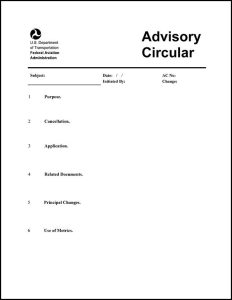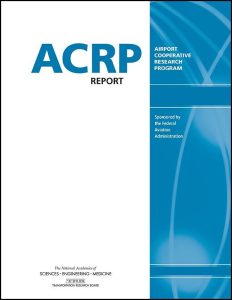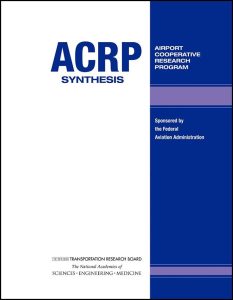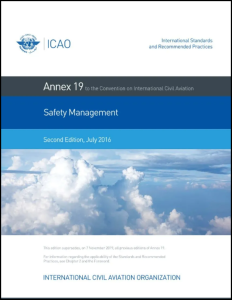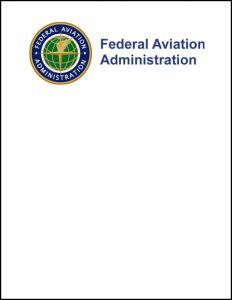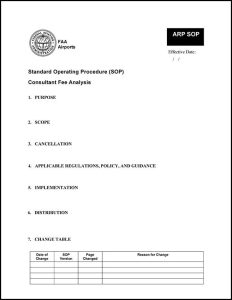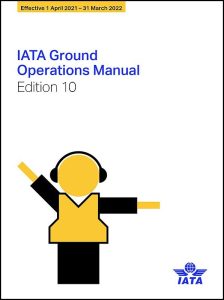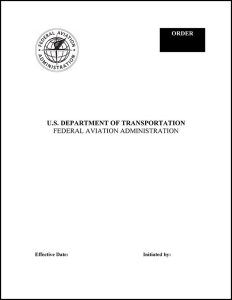To narrow the library of airside resources, use the filter boxes or airport map below or search box above.
Click an item below to expand.
Resources Matching Your Search
2017
This advisory circular (AC) sets forth guidelines for operational safety in airports during construction. This AC assists airport operators in complying with Title 14 Code of Federal Regulations (CFR) Part 139, Certification of Airports. For those certificated airports, this AC provides one way, but not the only way, of meeting those requirements. The use of this AC is mandatory for those airport construction projects receiving funds under the Airport Improvement Program (AIP). Chapters include planning an airfield construction project, construction safety phasing plans (CSPP), and guidelines for writing a CSPP. Included in the appendices are a safety and phasing checklist and a construction project daily safety inspection checklist.
2012
ACRP Report 62 presents a compilation of apron safety statistics from U.S. and non-U.S. airports to draw conclusions as to the apparent effectiveness of apron management programs around the world. Through a common set of data and consistent definitions, the report is able to compare and contrast apron management programs around the world to U.S. airports, while considering the common operational and ownership differences between U.S. and non-U.S. airports.
2016
ACRP Synthesis 71 compiles information and tools that help Part 139 airports conduct safety risk assessments (SRAs) effectively. This report enhances ACRP Report 131 with additional tools and templates and presents the conclusions from the survey and interviews as well as the main findings from the literature review. Several tools and templates, including a quick reference guide and a template for the SRA briefing, are provided in the appendices of this report.
2016
Annex 19 contains overarching provisions applicable to safety management functions related to, or in direct support of, the safe operation of aircraft and highlights the importance of safety management at the country level across multiple aviation domains. To complement the ICAO state safety program (SSP) and safety management system (SMS) frameworks in the annex, provisions for ICAO state safety oversight and for the collection, analysis, exchange and protection of information are incorporated. This document is available at the ICAO store for $41.
2019
ACRP Report 16, second edition, is designed to help airport practitioners, owners, operators, managers, and policymakers of small airports, who may have varying degrees of experience and backgrounds, to fulfill their responsibilities in such areas as financial management, oversight of contracts and leases, safety and security, noise impacts, community relations, compliance with federal and state obligations, facility maintenance, and capital improvements. The first edition has been edited and reformatted for currency, relevance, and usability and updated with additional information and new subject areas (e.g., unmanned aircraft systems, geographic information systems, digital notices to airmen, social media, and federal and state obligations). Also, hyperlinks to many of the documents and resources mentioned in this report, such as ACRP publications, industry sources, and sample checklists, have been collected into ACRP WebResource 6: Resources for Managing Small Airports.
2014
ACRP Synthesis 58 describes safety reporting methods and systems for airports certificated under Title 14 Code of Federal Regulations Part 139 by assessing current practices, processes, and systems used to collect and analyze safety data and information.
2020
ACRP Web-Only Document 42 provides toolkits to supplement the material available in ACRP Research Report 212, Volumes 1 to 3, to assist airports in managing unmanned aircraft systems (UAS). The web-only document includes templates, checklists, examples, and other documents related to airports and UAS.
2012
This desk reference supplements FAA Order 5200.11 by clarifying the requirements and processes of the ARP SMS. This document primarily focuses on the procedures for complying with the Safety Risk Management (SRM) component of SMS. However, it also includes guidance on evaluating the ARP SMS through the Safety Assurance process and explains the role of airport sponsors and state aviation organizations.
2014
This standard operating procedure (SOP) establishes uniform procedures for conducting the safety risk management (SRM) component of the FAA Office of Airports (ARP) Safety Management System (SMS) for certain ARP approval actions.
2021
This manual standardizes ground handling processes and procedures to reduce the complexity of working with multiple airlines, airports, and ground service providers. Standardizing ground and ramp operations for airlines can help drive down costs, reduce the risk of aircraft damages, and simplify training requirements. This manual is an acceptable means of compliance for a reference tool for IATA safety audits for ground operations. This resource is available from the IATA store for $132 to $265, depending on the format. It is also available as a floating license.
2013
ACRP Legal Research Digest 19: Legal Issues Related to Developing Safety Management Systems and Safety Risk Management at U.S. Airports explores the basics of a safety management system (SMS); discusses the concept of a just culture; highlights efforts to implement an SMS at airports and in other industries such as maritime, patient safety, and oil and gas; examines theories under which an SMS could lead to increased liability for airports; and provides a review of select state sunshine laws and the federal Freedom of Information Act. The roport also discusses certain available means of protecting SMS data from disclosure or discovery, and suggests potential strategies for managing legal issues that may arise due to the implementation of an SMS. The four key elements of an SMS are safety policy, risk management, assurance, and promotion.
2018
ACRP Legal Research Digest 36: Legal Issues Related to Implementation and Operation of SMS for Airports provides a review of potential legal issues, an in-depth analysis of identified issues, and the benefits experienced by airports that develop and operate a safety management system (SMS). Implementation of SMS in the airport and aviation sector has been an ongoing process since the early 2000s in the United States. As of 2018, few airports have implemented an SMS and even fewer have reported legal problems with early adoption. This report relies upon data from airports that have voluntarily implemented an SMS program.
2012
ACRP Synthesis 37 provides airport operators with data and experience from airport safety management systems (SMS) pilot studies. The report addresses SMS pilot study program management; SMS components design, development, and deployment; and SMS challenges and benefits.
2014
This order provides the basis for implementing the safety management system (SMS) within the Office of Airports (ARP). It describes the roles and responsibilities of ARP management and staff as well as other lines of business (LOBs) that will contribute to the ARP SMS. ARP will supplement this order with individual programmatic policy and guidance.
2017
TRB conducted a webinar that features research conducted by ACRP on using a risk-based safety management system (SMS) to proactively manage wildlife near an airport. The presence of wildlife near airports is a safety issue and carries with it growing economic losses in the aviation industry. This webinar described an SMS approach to wildlife hazard management (WHM). The panelists also discussed the Wildlife Hazard Management Risk Assessment Tool (WHaMRAT) model that enables users to determine an airport's overall aggregate wildlife risk score.
2011
ACRP Report 51 provides a methodology that airports can use to support their request for modification of standards. It is intended to be used in circumstances where the design criteria for separations between taxiways/taxilanes and (1) other taxiways/taxilanes and (2) fixed or movable objects as well as separations between taxiways and runways cannot be met. This risk-based methodology will be useful to airport staff and their consultants as they assess the risks associated with non-standard separations at existing constrained airports, where the standards cannot be practicably met.
2018
ACRP Research Report 190 serves as a reference guide and introduces common performance metrics for airport infrastructure and operational planning. The report includes information on how to interpret performance metrics that can be used for analysis among airports, airlines, and air traffic control. Accompanying the report is a Microsoft Excel-based Smart Guide, which serves as an interactive tool that provides access to information about a specific performance metric through search functions.
2020
ACRP Research Report 222 identifies data sources, best practices, and the challenges associated with collecting and sharing information with other stakeholders. Collecting and sharing data are essential in an airport's risk management process. These data can allow the airport to benchmark against the industry, monitor performance, and proactively understand trends. This report provides a potential roadmap to a future safety and operations national database.
2019
Airports are using tools that help them identify risks within their environment. Most airports are providing a means to report risk. Smaller airports use low-cost options such as email, a 24/7 phone number, or a suggestion box. Larger airports have embraced safety management or enterprise risk management programs that include more expensive reporting and tracking systems. ACRP Synthesis 106 provides information about the tools airports use to identify common hazards and the processes used for measuring, monitoring, and prioritizing the associated risks.
2021
This resource contains information on runway safety, safety management systems, drones, wildlife hazard management, and other safety topics. It provides links to resources and training courses.
